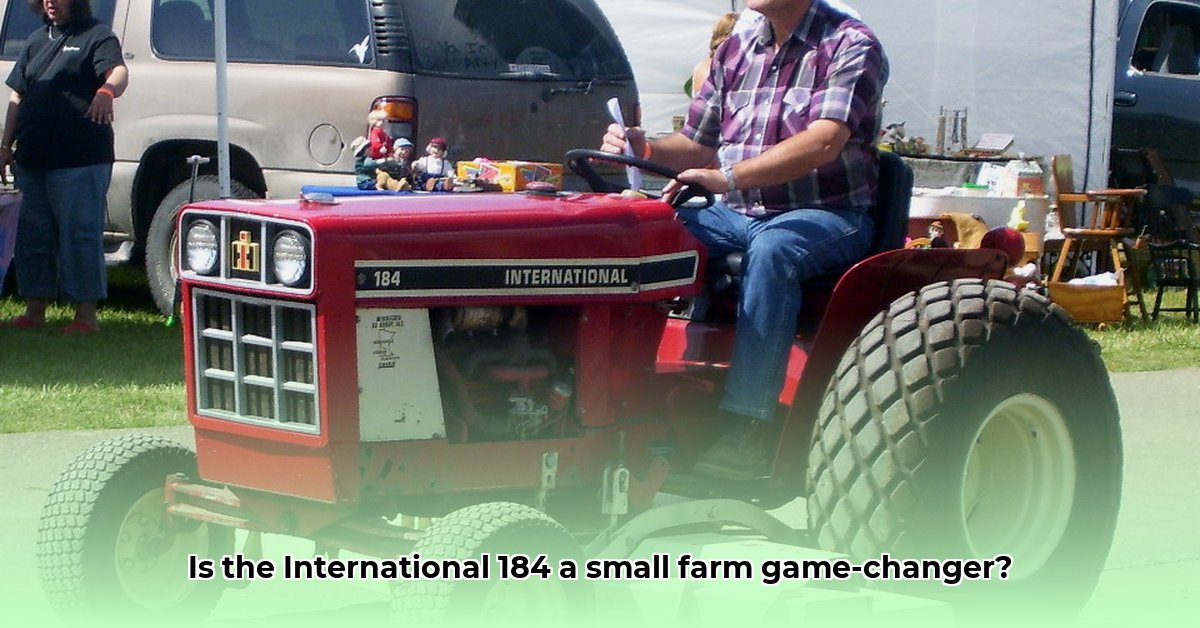
A Deep Dive into the International Harvester 184 Lo-Boy
The International Harvester 184 Lo-Boy, produced between 1977 and 1980, presents a compelling case study in the intersection of vintage agricultural technology and modern sustainable farming practices. This compact tractor, with its distinctive low-profile design, offers unique advantages, but also significant drawbacks. Is it a viable option for today's environmentally conscious small-scale farmer? Let's delve into the details. For more information on other International Harvester models, check out this resource.
Its 18-horsepower engine and low center of gravity made it ideal for navigating tight spaces and minimizing soil compaction—a crucial factor in promoting soil health. The 8-gallon fuel tank, while modest by today's standards, provided reasonable runtimes, suggesting relatively good fuel efficiency for its time. But can such a machine truly contribute to sustainable practices in the 21st century?
Assessing the Sustainability of the 184 Lo-Boy
The 184 Lo-Boy's sustainability is a multifaceted issue. While its compact size minimizes soil disturbance, a key tenet of sustainable agriculture, its reliance on gasoline presents a significant environmental drawback. Unlike modern environmentally friendly alternatives such as biodiesel or electric power, the 184 contributes directly to carbon emissions. A comprehensive lifecycle assessment, encompassing manufacturing, operation, and disposal, is crucial for a complete understanding of its ecological footprint. Unfortunately, such data is currently scarce, highlighting a crucial area for future research.
Furthermore, acquiring parts and finding skilled mechanics familiar with this older tractor presents additional challenges to its long-term viability. The difficulty in sourcing parts not only affects the tractor's lifespan, but also dramatically increases the long-term cost of ownership and maintenance. This raises a pertinent question: Does the environmental cost of restoring and maintaining a vintage 184 outweigh the benefits of using a more modern, eco-friendly alternative? This requires careful evaluation on a case-by-case basis, considering individual circumstances and farm needs.
Key Considerations for the Modern Farmer
Before investing in an International 184 Lo-Boy, prospective buyers should carefully weigh the following:
- Part Availability: Research the availability and pricing of replacement parts. Don't just rely on online listings; directly contact local suppliers to gauge lead times and cost. Is the supply chain reliable and cost-effective?
- Mechanic Accessibility: Locate qualified mechanics familiar with this vintage tractor model in your vicinity. Assess the cost of their services and the potential downtime related to repair needs.
- Fuel Consumption Analysis: Calculate your projected annual fuel usage based on your farming operations. Compare this cost to the fuel expense of a modern, eco-friendly alternative like biodiesel or electric tractors.
- Modern Alternatives: Investigate modern compact tractors that utilize biofuels or electric power for sustainability. Compare fuel costs, maintenance requirements, and overall environmental impact of these alternatives.
Research Opportunities: Filling the Knowledge Gaps
Further research is needed to understand the true place of classic tractors like the International 184 Lo-Boy in the modern sustainable farming landscape. Key areas of research include:
Comprehensive Lifecycle Analysis: Conducting a rigorous lifecycle assessment to determine the overall environmental impact of the 184 Lo-Boy, from its manufacturing to its eventual disposal.
Comparative Performance Studies: A detailed comparative study is needed to evaluate the performance, fuel consumption, and general efficiency of the 184 against current modern small-scale tractors.
The Verdict: A Case-by-Case Evaluation
The International 184 Lo-Boy undeniably holds a significant place in agricultural history. However, within the modern context of sustainability, its limitations are obvious. Its age and dependence on gasoline significantly hinder its suitability for most farms. While it might find a niche in specific applications, on smaller properties with limited tasks, a thorough cost-benefit analysis, that includes both economic and environmental factors, is crucial before committing to the purchase and restoration of this vintage tractor. It's not a universal solution, and for most modern farms, more eco-friendly options likely represent a more sustainable approach to modern agriculture.